For my 60th birthday, my wife bought us airline tickets to visit Ghana. I introduced this series of Ghana memories in an earlier post. This week’s post is about flying to Accra – in two different millennia.
Boarding
Wednesday, 26th December 2018, 8 a.m. At Landvetter airport. We’ve cleared security and are sitting in in a departure lounge café. Checked the cases in. Somehow my little case was one kilo heavier than A’s larger one. We’ve eaten a full fat yoghurt and each taken the day’s Malarone – malaria pill. Have to take them with fat for the body to absorb them properly. We’re to take them every day for the whole twelve days of Ghana, and for a week after we come home. I wonder, did we take malaria pills when we were there when I was a kid?
I was six years old when I first travelled to Ghana with my mother and baby sister. (She was three and a half.) We flew from a grey, chilly Heathrow in a British Overseas Aircraft Corporation Vickers VC10 jet. Don’t ask me how I know it was a VC10, and not a Comet 4 or a Boeing 707, but I do. I must have developed my childhood obsession with precise technical detail at a very young age.
Just possibly, I later built an Airfix model of the aircraft, or hankered after one, and that imprinted it. I can’t say.
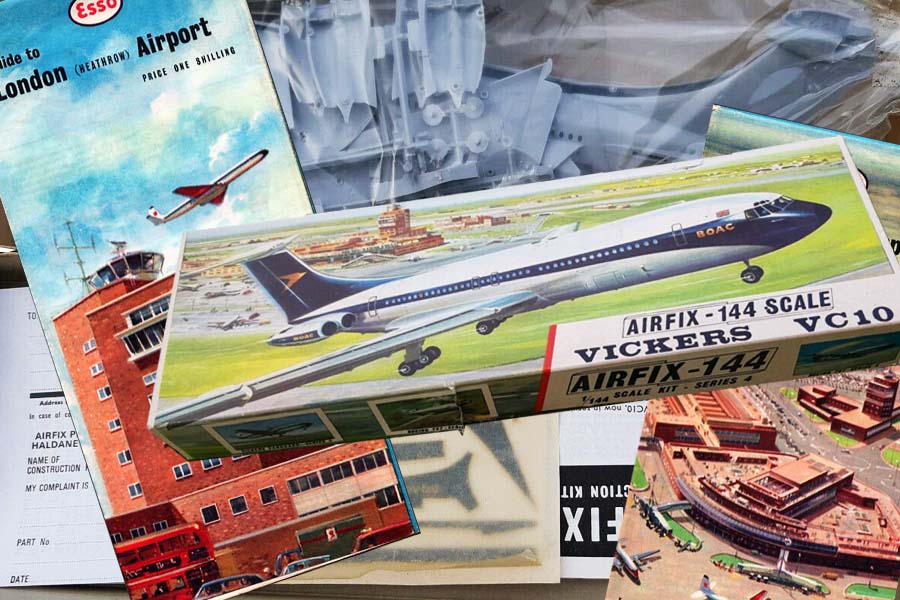
Take-off
15:20 The plane we’re sitting in on the tarmac at Amsterdam is a Boeing. Dreamliner? Can’t tell you any more about it than that. My child-self would be disgusted with my lack of technical knowledge. Or even interest.
Take-off has been delayed by half an hour, twice now. So we’re an hour late. We’ve been served cookies and water by way of compensation by a slightly frazzled crew. Loading luggage seems to be the problem. The plane is full. About 30% white faces, 60% black, 10% Asian. Very roughly. Various accents of English – British, Scots, American. French, Dutch, several African languages. A lot of the Africans seem to be travelling home for New Year. Lots of families, lots of kids. Very well-behaved kids.
My sister and I were well-behaved too, back in 1964. I’m sure we were. I don’t remember.
Flight deck
What I do remember was being invited to visit the cockpit. (Only they called it the flight deck.) I was led there down the aisle of the aircraft, between the rows of seats, by a tall air hostess. She wore a blue pillbox hat that looked like it might fall off, but didn’t. Maybe it was glued to her hair, I thought. Her hair was crisp and tight like my sister’s Sindy doll. She showed me into the cabin where the pilot and co-pilot sat before a bank of dials and lights as the aircraft flew through a landscape of clouds. To one side the navigator sat, also with a bank of dials, but no window. I thought he had the most boring job, only able to see the clouds over his shoulder and by craning past the captain’s head.
Afterwards I was given a cabin bag and a metal badge. The bag was made of blue plastic on a brown woven base. It had BOAC in large white letters on the side, and a stylised jet in silhouette . The badge had two golden wings either side of a blue shield: “BOAC Junior Jet Club” in golden letters on the shield. The bag disappeared in some move when I was still a child, but I kept the badge for years. I might still have it somewhere.
Junior Jet Club
19:52 We’ve been flying over the Sahara for hours now. Two perhaps. We’ve eaten and drunk. (Wine, brandy, coffee and water for me.) Been up to the toilet twice. Good to stretch my legs. It’s very boring, flying such a long way. The flight must have been longer back in 1964. How did Mum keep us kids amused? No in-flight movies back then, no music to listen to. I must have been bored. Surely I was bored? But all that’s erased. Just the visit to the cabin and the Junior Jet Club badge.
There’s no in-flight movie or music for me now either, mind you. The screen on the back of the seat in front of me is too close for comfortable viewing. But it’s a touchscreen and one of the programmes is an interactive map. You can plot the aircraft’s course, see the virtual view from the pilot’s cabin, pan around 360 degrees. I amuse myself with this a lot during the course of the flight.
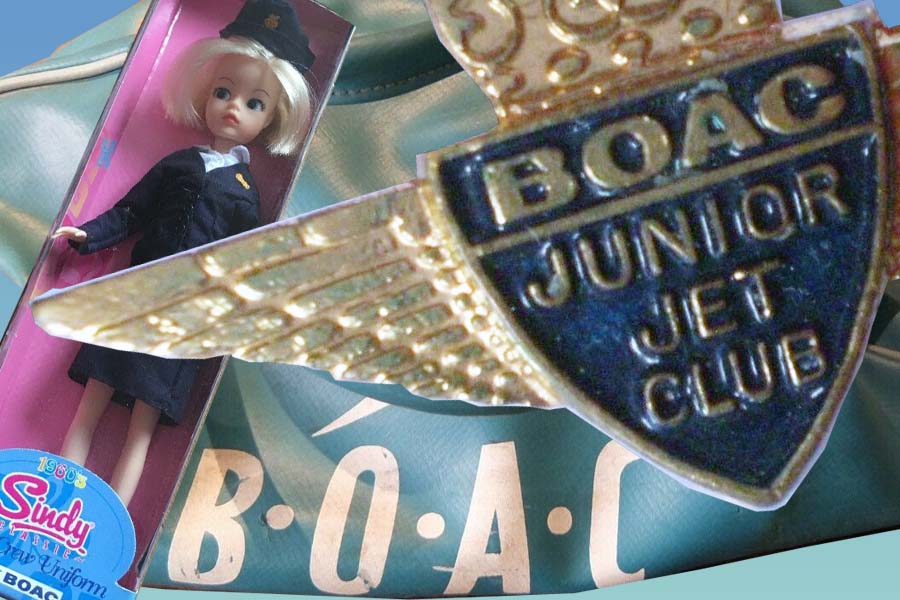
Flying to Accra
The other sharp memory from 1964 was the wall of heat when we left the plane. Of course the jet must have been air-conditioned, my adult-self explains to my six-year-old-self. Adultsplaining? I don’t remember that, but I do remember stepping from the aircraft onto the steps we had to climb down to the tarmac, and the sudden heat like a warm, damp blanket. (Though without the smell of wool. The only smell I can conjure up is aviation fuel, and that, I’m pretty sure, is a later memory.)
It was dark, and I never before felt anything like the warmth of that tropical night. For years after, whenever I experienced a similar combination of heat, humidity and night, my mind would go back to that first step from the aircraft’s cool interior into Africa.
21:03 local time (22:03 by our body clocks) The International Airport on the outskirts of Accra looks very different today from what I remember. Then there was a walk across a concrete apron to an open sided wooden building with electric lights hanging from the ceiling, and men everywhere smoking cigarettes. Now the air-conditioning stayed with us down the boarding bridge (no steps) and into the terminal.
Security and a steel-band
Terminal 3 at Kotoka International only came into operation a little before our arrival, earlier in 2018. It’s new and clean and very like international airports any place.
The security check to enter the country is rigorous. We stand in line and then hurry to the desks we’re pointed to. We hand over our passports. Serious immigration officials check our visas and scrutinise our faces. We stand seriously or nervously and try our best to resemble our passport photos. (In my case, a futile task.) Then we are photographed and our fingerprints are taken.
All the while there’s in-house entertainment. A band of musicians on the far side of the security barrier play steel drums and a singer sings in a gentle, lilting English an improvised song about how we are all so very welcome to Ghana. Welcome, he sings, and welcome back. He hopes we will have a nice visit and go away with many fine memories. And now the singer sings that he’s getting dry, that he needs a drink and can someone fetch him a drink please? But nobody does, so he sings that he’s going to take a break now because he’s very dry, but he hopes we’ll have a great visit and come back soon. We’ll always be welcome.
Into Africa
Where’s that wall of heat, I wonder. That warm, damp blanket? We collect our bags (an adventure in itself) and finally make our way to the doors. My wife has already established contact with the driver from the hostel where we’re booked to stay. He’s waiting for us, she says.
We step out of the airport’s air-conditioning into the hot, humid night. And immediately my glasses steam up.
Notes
Sadly I have no pictures from our flight to Accra in 1964. The illustrations are collages of items of an appropriate age culled from archived ads on E-bay.

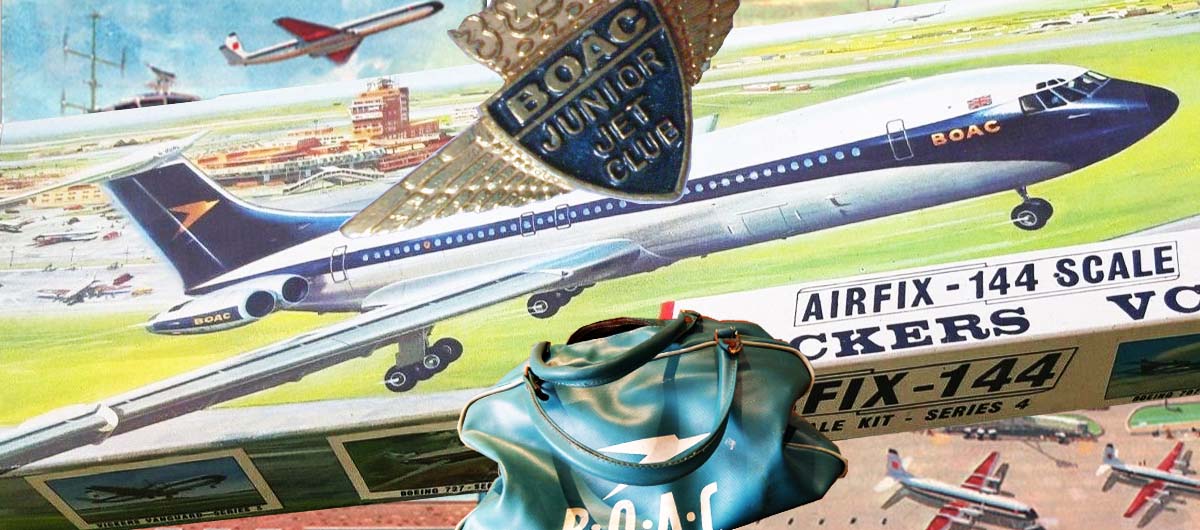
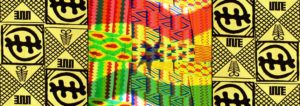

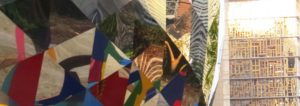
Love the parallel stories!
🙂